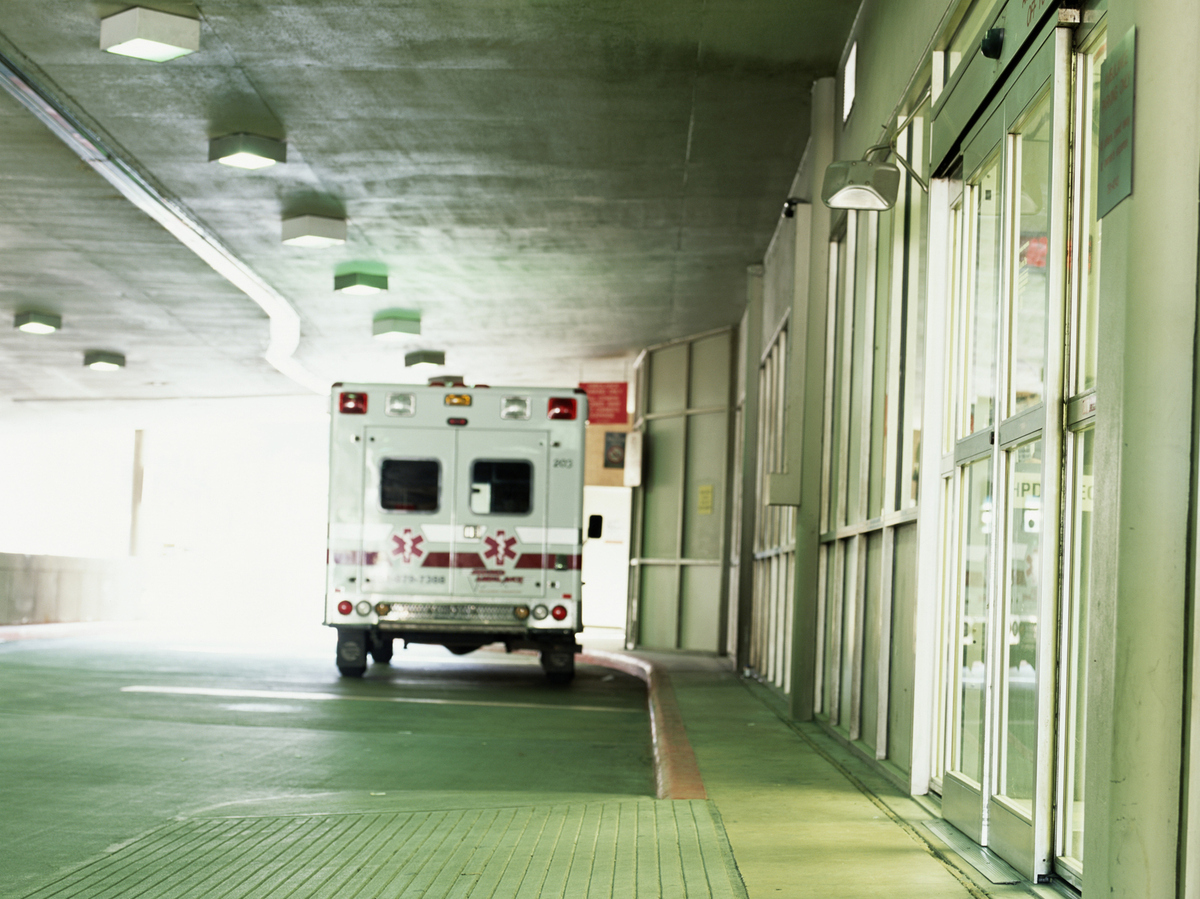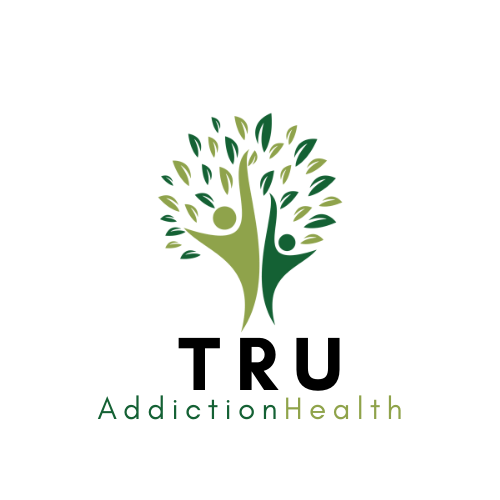
Patients with opioid addiction who appear in a hospital’s ER face lots of barriers to recovery, and so do the medical professionals attempting to help them. Relieving those barriers on both sides assists patients enter excellent follow-up programs that lead to enduring modification.
Terry Vine/Getty Images.
conceal caption
toggle caption
Terry Vine/Getty Images.

Patients with opioid addiction who appear in a hospital’s ER face lots of barriers to recovery, and so do the medical professionals attempting to help them. Relieving those barriers on both sides assists patients enter excellent follow-up programs that lead to enduring modification.
Terry Vine/Getty Images.
For many years, Kayla West viewed the opioid epidemic tear through her eastern Tennesseecommunity As a psychiatric nurse specialist, she dealt with people with mental illness however felt she required to do more to address addiction.
So in 2020, when the state produced a position to help hospitals improve addiction care in the emergency space, West leapt at the chance.
She understood that lots of people with substance use disorders land in the ER, and that beginning medications for opioid use– like buprenorphine (typically understood by the trademark name Suboxone)– might double an individual’s opportunity of staying in treatment a month later on.
Yet she likewise understood that supplying the medication was far from basic practice
A current report from the Legal Action Center and the Bloomberg American Health Effort discovered that in spite of prevalent agreement on the significance of addiction treatment in the ER and an extraordinary increase in overdose deaths, lots of hospitals stop working to screen for substance use, deal medications to reward opioid use disorder or link patients to follow-up care.

Numerous patients who do not receive those services pass away quickly after discharge or within a year of their ER check out, the report states.
However a growing number of emergency spaces and health professionals are attempting to modification that by establishing brand-new techniques that resolve the missed out on treatment chance in ERs.
” We understand it’s possible due to the fact that others have actually done it,” states Sika Yeboah-Sampong, an lawyer with Legal Action Center and coauthor of the report. “You have a mix of levers and kinds of structures of how various cities, counties, states and even independent hospitals embrace these practices.”
These designs have actually currently been put in location in some huge hospitals and little hospitals, backwoods and metropolitan centers, those with adequate resources and those on tight spending plans, she states.
In Tennessee, West looked to a number of of them for valuable assistance as she established a pilot program with one hospital she recommends. “It resembles looking at an array of options of where you can execute modification,” she states. Here are simply a couple of of the various strategies emerging from ERs throughout the United States:
Employing supporters for patients in California
Daniel Browne began drinking alcohol and utilizing prescription opioids at age 14. By the time he was 24, he was on the brink of losing his task, his cars and truck and his home.
” I didn’t understand where else to go to get treatment besides the ER,” he states.
In Might 2020, Browne drove 15 minutes from his house to Adventist Health Howard Memorial Hospital in Willits, Calif., where he was instantly fulfilled by Mary Anne Cox Gould. At the time, Cox Gould was a substance use navigator for a program called CA Bridge She promoted addiction treatment in the hospital and assisted link patients from the ER to centers in thecommunity (Cox Gould is now a manager of other navigators in Adventist Health hospitals.
” She fulfilled me in the parking area even prior to I entered into the ER,” Browne remembers.
She remained with him as he got his very first dosage of buprenorphine, which supplied instant remedy forwithdrawal symptoms “When you’re not dealing with the debilitating detoxing, it’s a lot easier to not relapse,” Browne states.
Cox Gould then strolled him over to the hospital’s outpatient center and assisted him schedule repeating consultations. When Browne encountered barriers filling his buprenorphine prescription at a regional drug store, she made the essential plans for him to get it from the hospital drug store, rather.


Now more than a year into recovery, Browne states he’s ended up being a more trusted worker and has actually reconnected with his moms and dads and more youthful sibling– successes he credits partially to the medication and constant assistance he’s gotten.
Those are trademarks of the CA Bridge program, states executive director Serena Clayton. Medication is thought about a crucial elementof treatment Linking patients with a navigator assists them in long-lastingrecovery And having navigators in the ER produces a more inviting environment for patients, and provides ER staff an opportunity to discover more about addiction, she states.
The design is presently used by about 130 hospitals in California, and the state has allocated $40 million to broaden the program to more than 100 others. The funds cover the wages of substance use navigators, training for ER staff on recommending buprenorphine and other technical assistance.
” This does not have to be a one-off story about a truly unique hospital,” Clayton states. “It can occur at scale.”
Getting rid of barriers for patients and medical professionals in New York City
Patients with addiction deal with lots of barriers to recovery, keeps in mind Dr. Joshua Lynch, an associate teacher of emergency medicine at the University at Buffalo. However medical professionals who desire to help them likewise come across difficulties, he states.
ER physicians are brief on time, typically do not have training for addiction- associated problems and do not understand where to refer the patients for follow-upcare To improve the scenario, both sets of barriers– for patients and for medical professionals– need to be dealt with, Lynch states.
That was his objective in producing New York City MATTERS, a program that provides patients gain access to to buprenorphine and rapidly connects them to addiction centers to continuetreatment It likewise provides drug store coupons that cover 2 week of medication, and assists with transport to the center through Uber Health— all through an electronic recommendation system.
” Being able to deal all of this without having to make any call is most likely what makes the medical professionals more than likely to use it,” Lynch states.

The program, partly moneyed by the state Department of Health, consists of 38 hospitals and 94 centers throughout New york city that are vetted to guarantee they provide buprenorphine to those who desire it and accept patients regardless of insurance status. Providers in any getting involved ER can raise a map of the centers on a tablet and let patients select where they ‘d like to be referred.
” This patient population is used to being informed ‘no’ or ‘that’s not possible’ or ‘you have to go to this location,'” Lynch states. “We desire to influence them by providing these options.”
A Lot Of patients select a center close to house or where they understand a good friend had an excellent experience, Lynch states.
He approximates about 55% of patients in the program make it to their very first consultation, where they canreceive medication and therapy National figures recommend less than 10% of patients addicted to opioids receive comparable treatment.
Lynch states the cost for any hospital or center to sign up with the program is very little, because it mainly leverages existing resources, and the state hosts the information for the recommendation platform. Broadening the program to centers throughout the whole state would cost less than $4 million a year, he states.
Training all health care providers in North Carolina
Dr. Blake Fagan is primary education officer at the Mountain Location Health Education Center in Asheville, N.C. For many years, when he approached hospital ERs to deal addiction training, he heard a common refrain.
” We do not have any location to send out patients later on,” he states medical professionals informed him.

Without a clear location for patients to continue treatment, the medical professionals hesitated to even begin medicationsfor opioid use That’s when Fagan and his coworkers recognized their training had to extend beyond hospitals.
They connected to federally certified health centers, which deal with people regardless of insurance status. In a state without Medicaid growth and with big rural areas, these centers serve lots of people with addiction.
Utilizing simply over $1 million in grant financing from 2 structures, the Mountain Location Health Education Center has actually trained the staff at 11 health centers and 2 regional health departments over the previous year and a half to provide medicationsfor opioid use disorder From March 2020 to Might 2021, those centers dealt with more than 400 patients with the disorder.
Dr. Shuchin Shukla, who heads the program together with partners at the University of North Carolina- Chapel Hill, states the centers have actually ended up being apparent recommendation areas for medical professionals who begin patients on medication in the ER.
” We consider ourselves a design for how to do this in a Medicaid non-expansion state,” Shukla states.

North Carolina likewise has programs to train medical trainees, homeowners, nurse professionals and doctor assistants in addiction care.
Dr. Sara McEwen, executive director of the not-for-profit Guv’s Institute, which has actually assisted to include the training into medical school curricula, stated trainees who see addiction prevention and treatment as a regular part of medicine will naturally use that when they reach the ER or other clinical settings.
In truth, a current research study at Wake Forest School of Medicine discovered 60% of medical trainees who got the education reported utilizing it throughout their internships.
” The knowing is originating from med trainees to homeowners, up the chain,” states Paige Estave, a coauthor of the research study and a prospect for joint doctoral and medical degrees at theschool “Trainees bringing it up will trigger medical professionals to begin believing, talking and finding resources. … Ideally, those little pieces of modification will accumulate cumulatively to something more.”

How well do these programs work?
Throughout these different designs, one necessary concern stays: Do they work?
Regrettably, it’s likewise one of the most tough to response, according to addiction scientists and those who run theprograms Numerous tasks are still in the early stages and will not be able to procedure success for another couple of years. Others are having a hard time to collect long-lasting information that’s essential for examination.
In North Carolina, for circumstances, McEwen understands more than 500 medical trainees receive the addiction training each year, however till they finish residency and are practicing medicine separately, it’s hard to assess the number of will recommend buprenorphine to theirpatients In New York City, Lynch can approximate the number of patients make it to their very first consultation at a center, and a current research study of the CA Bridge program tracked the number of patients were offered buprenorphine throughout 52hospitals However those numbers do not show the number of patients accomplished long-lastingrecovery That would need tracking patients for months and years.
In the meantime, people like West who are looking to these designs as guideposts need to run with a level of unpredictability. However she states she ‘d rather start now than wait for the ideal service.
” Any motion on this is an action in the best instructions,” West states. “I have actually discovered that no matter how different your resources are, there are options for modification in your ER.”
Kaiser Health News is a national, editorially independent newsroom and not-for-profit program of the Kaiser Family Structure. KHN is not associated with Kaiser Permanente.
